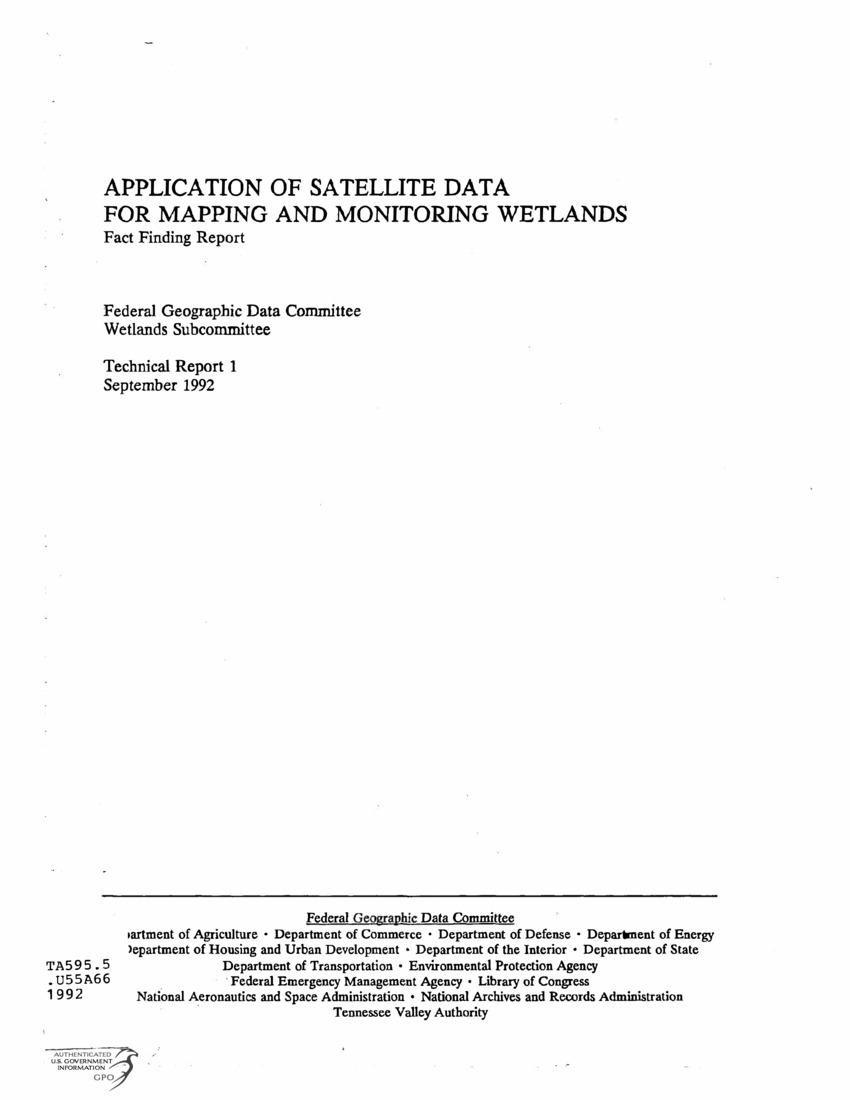Application of Satellite Data for Mapping and Monitoring Wetlands
The detail and reliability of information derived from satellite data have steadilyimproved. These improvements include advancements in spatial and spectral resolution,georeferencing, and digital itnage processing techniques, along with .growing experienceusing satellite data. Significant strides have been made in integrating ancillary data, suchas soils and digital elevation models, into the classification of satellite data. Thisintegration is dependent upon the use of geographic information system (GIS)technology. Stream gauging data and rainfall data are now being used to select the bestscenes for wetland identification. Even with these improvements, satellite data can notmatch the accuracy of areal extent, classification detail, or reliability that can beextracted from conventional aerial photography using manual photo-interpretationtechniques, such as those used by the U.S. Fish and Wildlife Service's (FWS) NationalWetlands Inventory (NWI) Project. However, for some regions, satellite remote sensingmay be the most cost-effective means for conducting reconnaissance wetland surveys.
Publisher - U.S. Geological Survey (USGS), Federal Geographic Data Committee (FGDC)
Subjects - Wetlands
Citation: USGS. 1992. Application of Satellite Data for Mapping and Monitoring Wetlands. Reston (VA): U.S. Geological Survey (USGS), Federal Geographic Data Committee (FGDC); Wetlands Subcommittee Technical Report I. http://www.gpo.gov/fdsys/pkg/CZIC-ta595-5-u55-a66-1992/pdf/CZIC-ta595-5-u55-a66-1992.pdf
